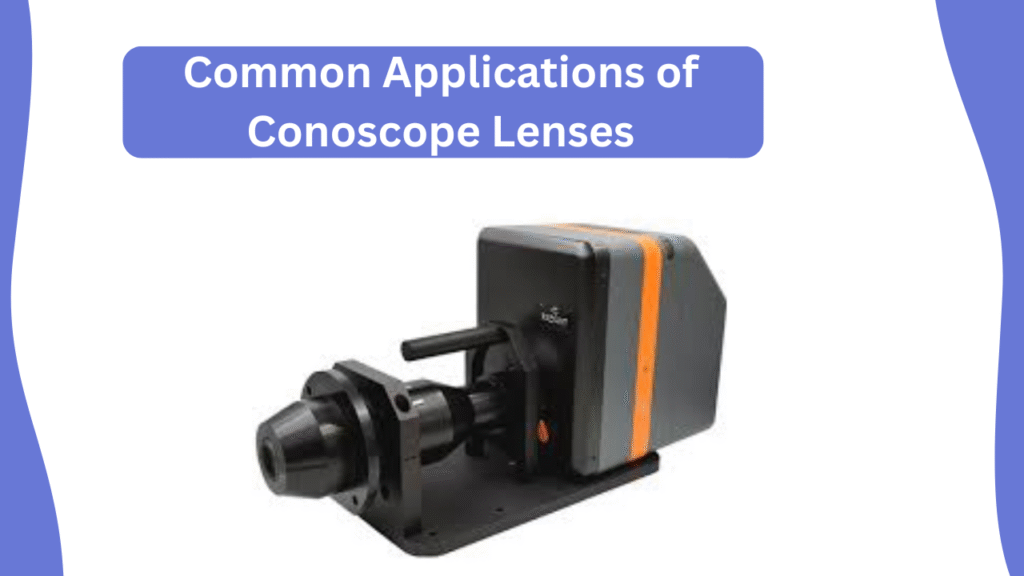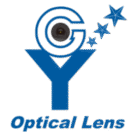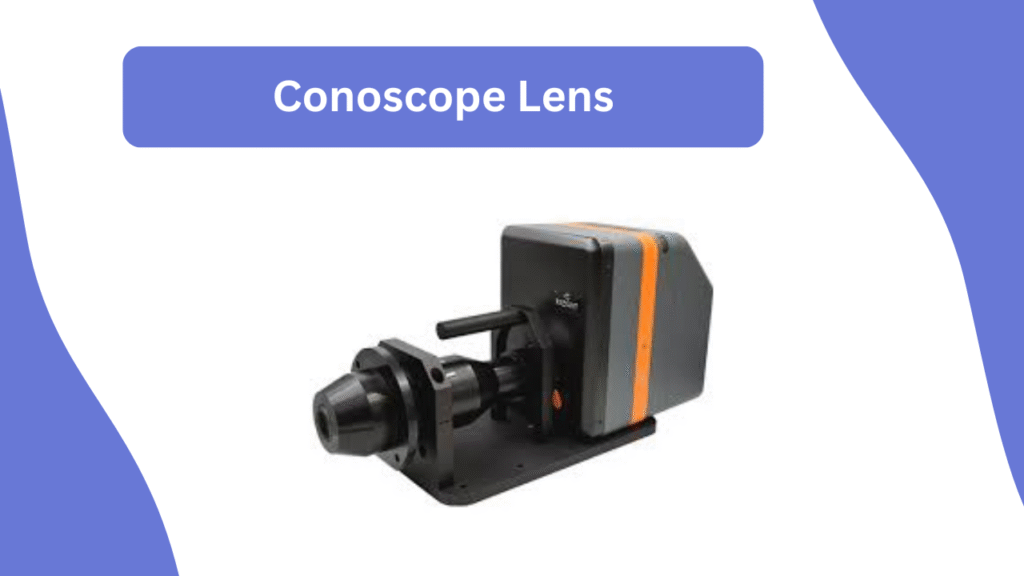A conoscope lens, also known as a conoscopic lens or interference pattern imaging lens, is a specialized optical device designed to examine birefringent materials by producing detailed conoscopic interference patterns. Widely used in LCD panel testing, optical metrology, polarized light microscopy, and photonics research, this lens enables scientists and engineers to study the interaction of light with anisotropic structures, such as liquid crystals, optical crystals, and transparent polymers. But what exactly is a conoscope lens, how does it function, and why is it vital in advanced optics and display technologies?
In this article, we explore the working principle, diverse applications, and core advantages of conoscope lenses across multiple fields.
What Is a Conoscope Lens?
A conoscope lens is a special type of optical lens used to see how light moves through certain materials. These materials, like crystals or liquid crystals, change the way light behaves depending on the direction it comes from. The conoscope lens works with a polarized light microscope to show colorful patterns called interference patterns. These patterns help scientists study things like stress in glass or the structure of crystals. The lens collects light from the material and creates a clear image that shows how the light has changed.
Working Principle of a Conoscope Lens
A conoscope lens works by using special light and lenses to show how light changes as it passes through certain materials like crystals or glass.
Here’s how it works in simple steps:
- A light source that vibrates in one direction (called polarized light) shines through the material you want to study.
- If the material is birefringent (meaning it bends light in two different ways), it changes how the light travels.
- The conoscope lens collects this changed light and focuses it into a special image full of patterns, called a conoscopic image.
- These patterns help scientists or engineers understand the material’s properties—like whether it’s under stress or how its internal structure is arranged.
This process is useful in studying materials such as crystals, LCD screens, or even stress in clear plastic or glass.
Types of Conoscope Lenses
Conoscope lenses come in different types. Each is designed for specific needs depending on how much detail or area you want to see.
Fixed-Focus Conoscope Lens
This lens has a fixed focal length and does not allow zooming or adjustment. It’s ideal for routine lab work where the distance between the sample and lens remains constant. It’s simple, reliable, and easy to set up.
Zoom Conoscope Lens
A zoom conoscope lens allows you to change magnification easily. This is useful when examining different parts of a sample in detail without moving the sample. It’s perfect for research where close-up analysis is needed.
Telecentric Conoscope Lens
This lens keeps the image scale constant, even if the object is at different distances. It’s great for automated inspection systems and measuring tools that require very precise and distortion-free imaging.
Wide-Angle Conoscope Lens
This type of lens captures a large field of view, making it suitable for analyzing bigger samples like screens or display panels. It helps in identifying full interference patterns at once without repositioning the sample.
Each type of conoscope lens is chosen based on what you need to see, like how deep, how wide, or how clear the view should be.
Common Applications of Conoscope Lenses

Conoscope lenses are used in many modern science and tech areas. Here are some common ways they are used:
- LCD Panel Testing:
Helps check if the pixels and liquid crystals are lined up properly in screens. - Crystal Orientation Analysis
Used in science labs to study how crystals are arranged inside rocks or materials. - Stress Analysis
Detects hidden stress inside clear materials like glass or plastic. - Polarimetry
Checks optical parts like waveplates or retarders to see how they affect light. - Educational Research
Helps students and researchers learn about light behavior and birefringence.
Key Benefits of Using Conoscope Lenses
Using a conoscope lens offers many helpful features. Here are the main benefits:
- High Precision
It gives very accurate results when studying special materials like crystals or glass. - Non-Destructive
It checks the sample without causing any damage. - Real-Time Visualization
You can see the light patterns live, as they happen. - Versatility
Works well with many different types of materials and in different industries. - Improved Quality Control
Helps factories make sure their screens and optical parts are working correctly.
How to Choose the Right Conoscope Lens
Picking the right conoscope lens depends on what you need. Here are some things to think about:
- Field of View
Choose a lens that can cover the full size of your sample or screen. - Resolution
A higher resolution helps you see small details more clearly. - Compatibility
Make sure the lens works with your microscope or camera system. - Working Distance
Check how far the lens needs to be from the sample to work safely and clearly. - Cost vs. Performance
Pick a lens that gives the best results within your budget.
Conoscope Lenses in LCD Quality Testing
In making LCD screens, conoscope lenses help check if the display looks good from all angles. Engineers use them to test how well the pixels are lined up and how even the colors look. This testing doesn’t harm the screen. It helps make sure that only high-quality displays are sent to customers.
Maintenance Tips for Conoscope Lens Longevity
Proper care ensures your conoscope lens stays in top condition for years. Here are some easy tips to follow:Store properly
- Store properly :
Keep the lens in a clean, dust-free case when not in use to avoid damage or contamination. - Clean gently:
Use a soft microfiber cloth and a suitable lens cleaning solution. Avoid paper towels or rough fabrics that can scratch the surface. - Avoid harsh conditions:
Keep the lens away from direct sunlight, high humidity, and extreme temperatures, which can degrade optical components over time. - Handle with care:
Always wear clean gloves when touching the lens to prevent fingerprints, oil, or smudges from affecting image quality.
Future Trends in Conoscope Lens Technology
Conoscope lenses are evolving quickly with new technology trends. Here’s what the future looks like:
- Compact design: Modern lenses are becoming smaller and easier to integrate into digital imaging systems and portable devices.
- AI-powered inspection: Artificial intelligence is now being used to analyze interference patterns automatically, speeding up inspection in labs and factories.
- Enhanced performance: New materials and coatings are improving image clarity and durability, especially in high-precision fields like AR, VR, and photonics.
- Automation ready: Many new systems can be connected with automated production lines, reducing human error and improving efficiency.
Conclusion
The conoscope lens is an important optical tool that helps us clearly see how light travels through materials like crystals, glass, and liquid crystals. It’s used in many fields such as research, display testing, quality control, and optical inspection. Because it provides accurate results without harming the sample, it’s trusted by professionals in labs and industries. As new technologies like AI, augmented reality, and smart imaging continue to grow, the role of conoscope lenses will become even more valuable in the future of optics.
If you’re looking to improve your optical system with precision and clarity, choosing the right conoscope lens is a smart step.
Explore our latest conoscope lens options here.

